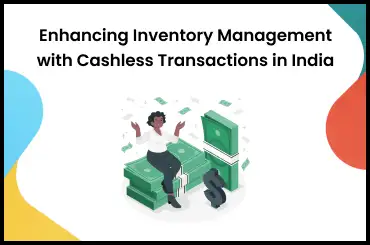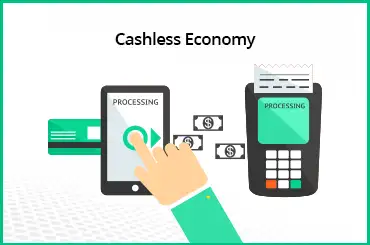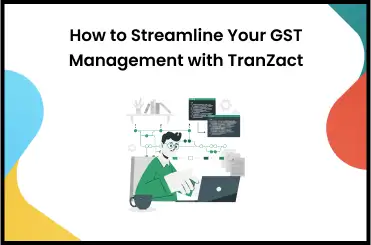There are several key differences between CGST, SGST, and IGST. They are three types of GST differentiated based on who is the tax levying or collecting authority and in what case the taxes are being collected.
India gives both central and state governments the power to levy and collect taxes. Traditionally, there were so many types of indirect taxes running altogether that made the country's taxation system complicated. However, after GST have been put into action in 2017, the system becomes much smoother and easy to understand.
The main concept of GST is levying a value-added tax on most goods and services that the consumers pay at every point of sale, and ultimately the tax is collected by the government from the merchants.
In this article, a complete outline of CGST, SGST, and IGST has been provided with examples, to help you know the difference between IGST, CGST, and SGST clearly and how they work.
What are IGST, SGST, and CGST?
CGST, SGST, and IGST are three classifications of GST or Goods and Services Tax. GST is a digitalized taxation system that was created as one consolidated taxation system for the entire India. However, the system has its own sub-divisions for making tax collection easy in different cases, such as inter-state trading or intra-state trading.
To explain CGST, IGST, and SGST.
IGST
The full form of IGST is Integrated Goods and Services Tax. It is a tax that is levied by the state government on the inter-state movement of goods and services. So, when products or services are supplied between different states, IGST is collected. It is collected by the central GST authority. However, the revenue is equally shared by the central and state authority.
As an example, let's say you have your production business in Maharashtra and sell the goods in Gujarat. Since this is inter-state trading, hence IGST is applicable. As the products are consumed in Gujarat, the wholesalers and retailers in Gujarat will pay IGST at a certain percentage to the manufacturer in Maharashtra.
Further, the manufacturer in Maharashtra who has received IGST will further deposit it to the government. Now, half of the tax revenue will go to the central government and half of it will go to the state government. You can simply say that IGST = CGST + SGST.
SGST
SGST means State Goods and Services Tax. It is also applicable in the case of the intra-state movement of goods and services. But the tax levying authority here is the state government. So, SGST is the tax levied and collected by the state GST authority on the intra-state trade of goods and services.
Let's take the same example of having a manufacturing company in Chennai and selling the products within Chennai. So, as the manufacturing company is supplying products at the intra-state level the state government will levy State Goods and Services Tax besides CGST will be collected by the central government.
If the goods sold were of value Rs. 20,000 and the GST rate is 18%, the trader will need to pay 18 % of 20,000 = Rs. 3600 as GST that will be divided equally among state and central government i.e SGST 9% = Rs. 1800 and CGST 9% = Rs. 1800.
CGST
CGST or Central Goods and Services Tax is a tax that is levied and collected by the central government or central GST authority in case of intra-state trading or movement of goods and services. It means, when products or services are moved within one state, CGST is applicable.
Differences Between IGST, SGST, and CGST
Let's have a look at the basic difference between CGST, SGST, and IGST -
Applicability of the Tax
- CGST is applicable to intra-state goods and services supply.
- SGST is also applicable to intra-state goods and services supply.
- IGST is applicable to inter-state goods and services supply.
Tax Levying and Collecting Authority
- CGST is levied and collected by the central government.
- SGST is levied and collected by the state government.
- IGST is levied and collected by the central government, but the revenue is equally distributed between central and state governments.
Input Tax Adjustment Permissible
- You can use the input tax credit of CGST against CGST or IGST but not SGST.
- In the case of SGST, the input tax credit can be used against SGST or IGST but not CGST.
- An input tax credit of IGST can be against CGST or SGST after paying IGST.
How are IGST, SGST, and CGST Collected?
Well, the main point of the application of GST in 2017 by replacing various indirect taxes is to apply a single tax law for the whole country to make the system simple. However, India's growing economic system is complex, and business takes place on intrastate as well as inter-state levels. And, to make the tax collection system easy, both central and state governments can collect tax on products and services supplied or consumed. So, GST is divided into CGST, SGST; and IGST, which is specifically split equally between the state and the center.
Know How the GST System Works
When any manufacturer, supplier, or retailer sells a product, he adds the GST to the product's price when selling it to his consumer. For a manufacturer, the supplier is the consumer; for a supplier, the retailer is the consumer; and for a retailer, the end buyer is the consumer. This is how the value chain functions.
To make it simple, when a customer makes any purchase, the price he pays is inclusive of the GST. The GST is charged or collected by the retailer or seller and forwarded to the government.
When filing GST, the registered taxpayer will deduct the Input Tax Credit from the GST tax he needs to pay and pay the balance amount after this adjustment.
GST is charged at every stage of a product. Let's now understand how GST is collected or charged at various stages through some examples and scenarios. This will also help you to understand what is the difference between CGST, SGST, and IGST.
Stage 1: When the product is in the manufacturing stage
Let's take the example of manufacturing clothes and assume that 10% GST is charged on clothing for ease of understanding. Let's say the cost of raw material is Rs. 1000 where GST is already included i.e. 10% of Rs. 1000 = Rs. 100 Rs.
After manufacturing the clothes from raw material, the manufacturer adds Rs. 100 as his profit when selling it to the wholesaler, and the cost of the product becomes Rs 1100.
Now the tax on the clothing item is Rs. 110 i.e. 10% of Rs.1100, so the GST that the manufacturer needs to pay is Rs. 110. Now since he has already paid Rs 100 GST on raw materials, while filing his return, he just needs to pay the balance Rs 10.
Stage 2: When the product moves from the manufacturer to the wholesaler
Now when the wholesaler buys the product at Rs 1100 this amount already includes GST Rs 110 (10% of 1110). The wholesaler now adds his profit margin of Rs. 90 and the cost of the item becomes Rs. 1200 including GST of Rs. 120. Now, to pay GST, the wholesaler just needs to pay the balance because he has already received an input tax credit of Rs 110 when buying from the manufacturer. So, he simply needs to pay Rs. 120-110 = Rs. 10
Stage 3: When the product moves from the wholesaler to the retailer
Next, when the retailer makes a purchase of clothing items from the wholesaler, he pays Rs. 1200 which includes Rs. 120 GST. Now the retailer adds his profit margin of Rs. 100 and the cost of the item becomes Rs. 1300. The GST would be 10% of 1300 i.e. Rs. 130.
The retailer will sell the product at Rs. 1300 where the GST that the customer will pay is 10% of Rs 1300 i.e. Rs 130.
Thus, GST works like a value chain and benefits everyone. The Goods and Services Tax system has made the Indian taxation system significantly streamlined and foolproof.
Trust TranZact to Keep Your Taxation Activities on Track
As you always search for new ways to make your business better you can start using TranZact, a cloud-based software to manage all your business functions including GST compliance tasks. And, the best part is by assisting in generating invoices and taxation documents and maintaining them, this software will also make paying CGST, SGST, or IGST easier for you!
FAQs on Difference Between CGST, SGST, IGST
1. Can I use CGST and SGST to pay IGST?
You can use the CGST input tax credit to pay CGST first and the balance to pay IGST later. Similarly, the credit of SGST needs to be paid for SGST and then the balance to IGST.
2. Can we adjust SGST with IGST or CGST?
SGST and CGST credits can't be adjusted against each other. But, SGST is adjustable with IGST.
3. How do you use IGST input for CGST or SGST?
You can use the IGST input tax credit to pay CGST or SGST only after you have used the IGST credit for paying IGST in total.
















